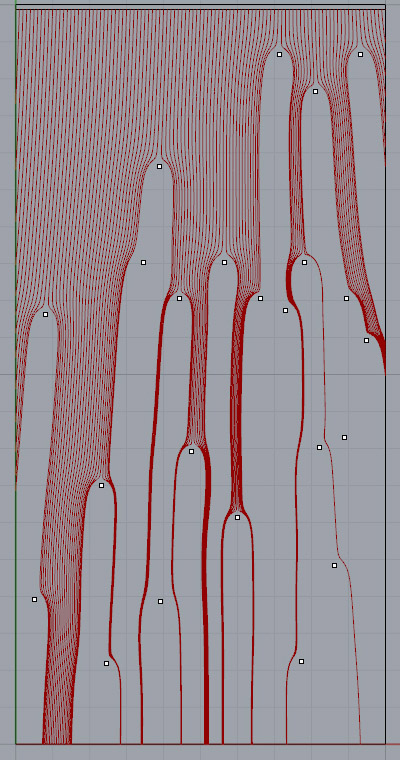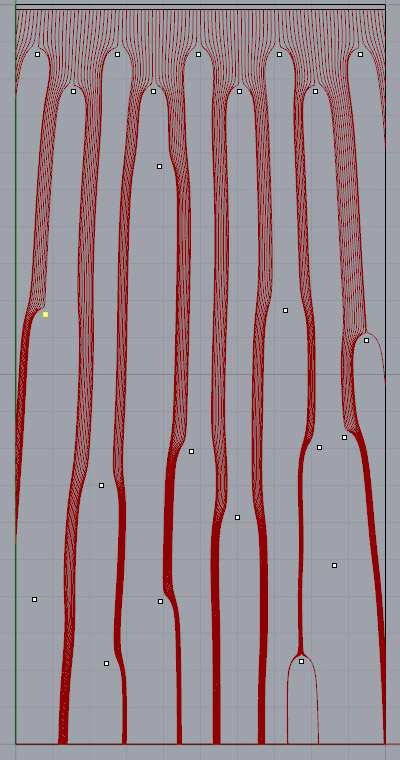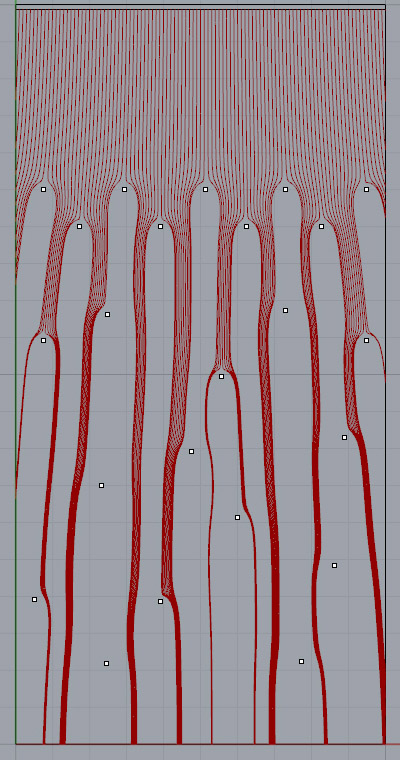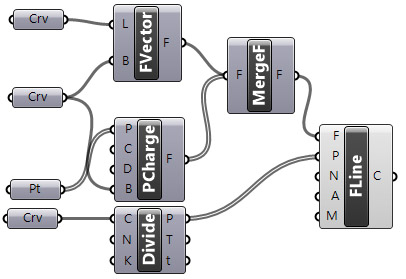Force Fields in Grasshopper
Finally, I had a chance to test and understand the force fields tab in Grasshopper. It creates a continuous vector field inside of a given boundary. Therefore, it is very useful if you want to create an effect of the continuous presence of a force, such as gravity. The Wikipedia definition of a vector field is very basic and understandable:
In vector calculus and physics, a vector field is an assignment of a vector to each point in a subset of space. For instance, a vector field in the plane can be visualized as a collection of arrows with a given magnitude and direction, each attached to a point in the plane. We often use vector fields to model, for example, the speed and direction of a moving fluid throughout space, or the strength and direction of some force, such as the magnetic or gravitational force, as it changes from one point to another point.
While playing with the components of force fields in Grasshopper, I came up with the idea of using field lines. The Grasshopper definition is very simple. It takes necessary inputs such as linear and point charges and calculates the field lines. I created this in 2015. But in 2021 it still works without any change. Here is the Grasshopper definition:




In the future, I am planning to go further in this topic in my Design Mathematics studies. I feel that the vector fields and the simulations based on CFD can have a simple mathematical basis. I hope that I will be able to study in this field.








